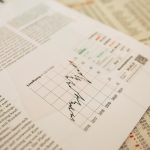2023 Mid-Year Market Overview & Economic Update
Ruben’s Commentary on the Market
2023 Mid-Year
Market Overview & Economic Update
By now we have officially entered summer and we are experiencing an unprecedented heat wave in some parts of the country and flooding in others. Many U.S. cities in the west and south have broken and shattered records for consecutive days over 100 degrees, while other areas in the northeast are experiencing the proverbial 100-year floods. Despite the discomfort from the weather, our economy continues to be a global bright spot. We are in the middle of July when most of the June economic reports have been released, and we now have a clearer picture of how the second quarter and the year-to-date 2023 economy have fared. This is also the beginning of the “earnings season.” (This occurs following each quarter, where the S&P 500 companies declare their earnings from the preceding quarter.) Although the analyst community has predicted a slowdown in corporate earnings, the economy is showing resilience and may prove them wrong, with early results exceeding expectations.
Inflation continues to be a lingering concern for the Federal Reserve governors. However, after raising rates 10 straight times they paused the increases at the June meeting following the inflation rate dropping to 4.9%. This drop in the inflation level fell below the interest rate of 5.25% imposed by the Fed to date. This is good news and indicates that inflation has slowed. Although they chose not to raise rates in June, they could still raise rates one or two more times if they observed a rebound in inflation. An additional concern for the governors was the strong employment picture. Low unemployment and a population that continues to steadily spend still presents worries that the economy may not slow as much as the Fed would like to see, and that inflation may again rear its ugly head.
There was some good news announced following the July 4th weekend. The Department of Labor reported that 209,000 jobs were added in June as opposed to 220,000 as estimated by economists. This is a sign that job number of job seekers is shrinking. The unemployment rate dropped marginally from 3.7% in May to 3.6% last month. Government, healthcare and construction were among the sectors that added jobs. Airline fares and gas prices have dropped along with the cost of buying a used car. The retail sales report came in slightly lower than analysts anticipated but still maintained a steady pace. Another surprising bit of good news was a June drop in the inflation rate to 3% from a May reading of 4% and down significantly from 9% in June of 2022. However, the Fed may still raise rates by .25% at the July 25-26 meeting since its target inflation rate of 2% has not yet been reached. Inflation has receded and employment appears to be stabilizing. These are both positive signs for the economy. It will be interesting to follow the Fed’s logic at the late July meeting because there are differing opinions among the voting members as to whether the Fed should continue raising rates or consider holding off on further increases. There is a strong possibility that we will see a split vote. This would certainly be a positive event. Several of the voting members feel that raising rates without allowing the economy to further slow without more increases may be pushing things a bit too far. Others feel that it is important to keep a finger on the trigger and force the result. Whether rates are raised or not, the differing opinions would be a strong signal that the Fed may have gotten close to the end of its journey to control inflation and that the economy is firmly on the road to recovery.
The consumer is breathing easier and is feeling that lower prices and healthy employment are signs of a stabilizing economy. The Consumer Confidence Index jumped to 109.7 in June, compared to 102.5 in May. A number above 100 indicates that the consumer feels more optimistic about the economy. This is all good news and perhaps a good indicator that the fear of a recession is slowly going away.
As anticipated, early earnings reports have provided mixed but mostly positive results. Several of the major banks are showing robust earnings. Some smaller regional banks are still lagging. Federal regulators have stepped up oversight and restructuring of many smaller banks and in some cases facilitated their purchase by larger national banks. Assorted companies in other sectors are showing strong earnings. Delta Airlines’ strong earnings are a result of increased consumer travel demands, the highest level since before the pandemic. Lockheed Martin has experienced strong earnings on the new orders for F-35 fighter aircraft, and the demand on home builders continues to soar. The results will no doubt be mixed but show promise for an improving economy.
Overall, I feel confident that we are headed in the right direction. Inflation is retreating, the employment rate is healthy, and prices are stabilizing. Additionally, without getting too far ahead of myself, the odds of a recession appear to have diminished. The financial markets have rebounded significantly from the 2022 lows and several financial indexes have met or exceeded previous highs. I envision the second half of 2023 continuing along the path of recovery with the financial markets adding to their first half gains. Overall, we appear to be headed for a soft landing for the economy and not headed for a recession. This is a very positive sign.
As always, I am available to answer questions that you may have. Please don’t hesitate to reach out to me.
Best regards,
Ruben E. Guerra
Guerra Investment Advisors



